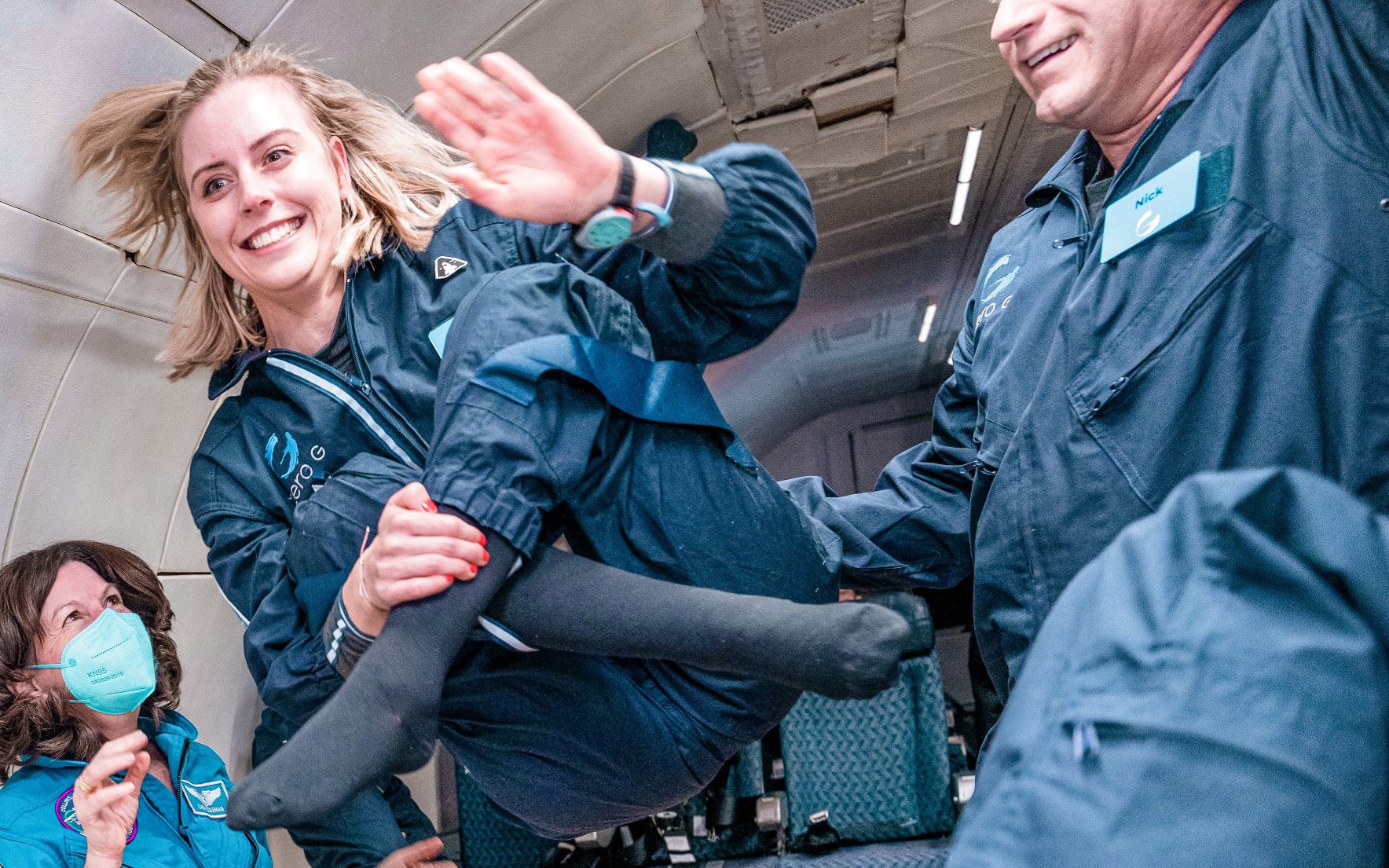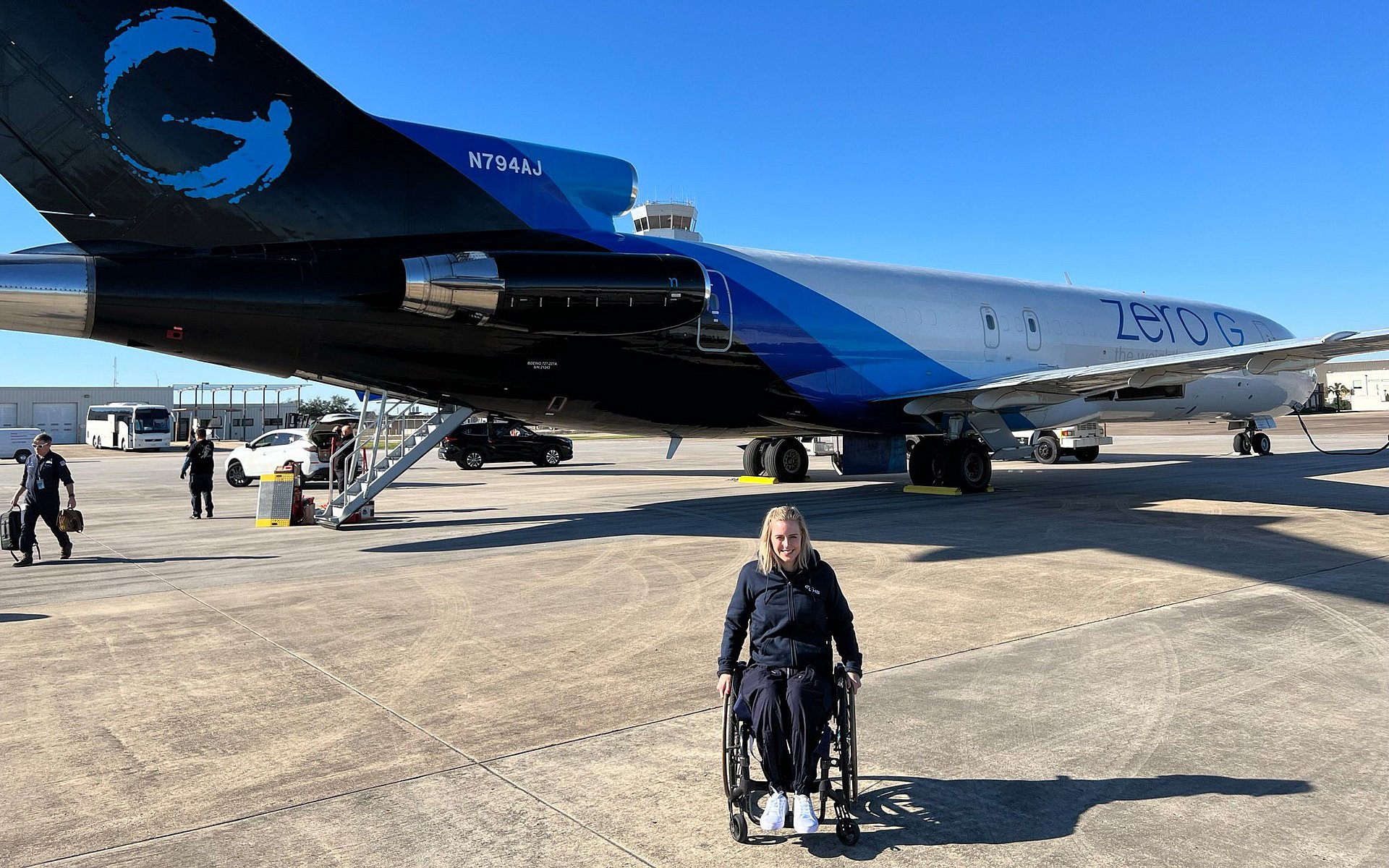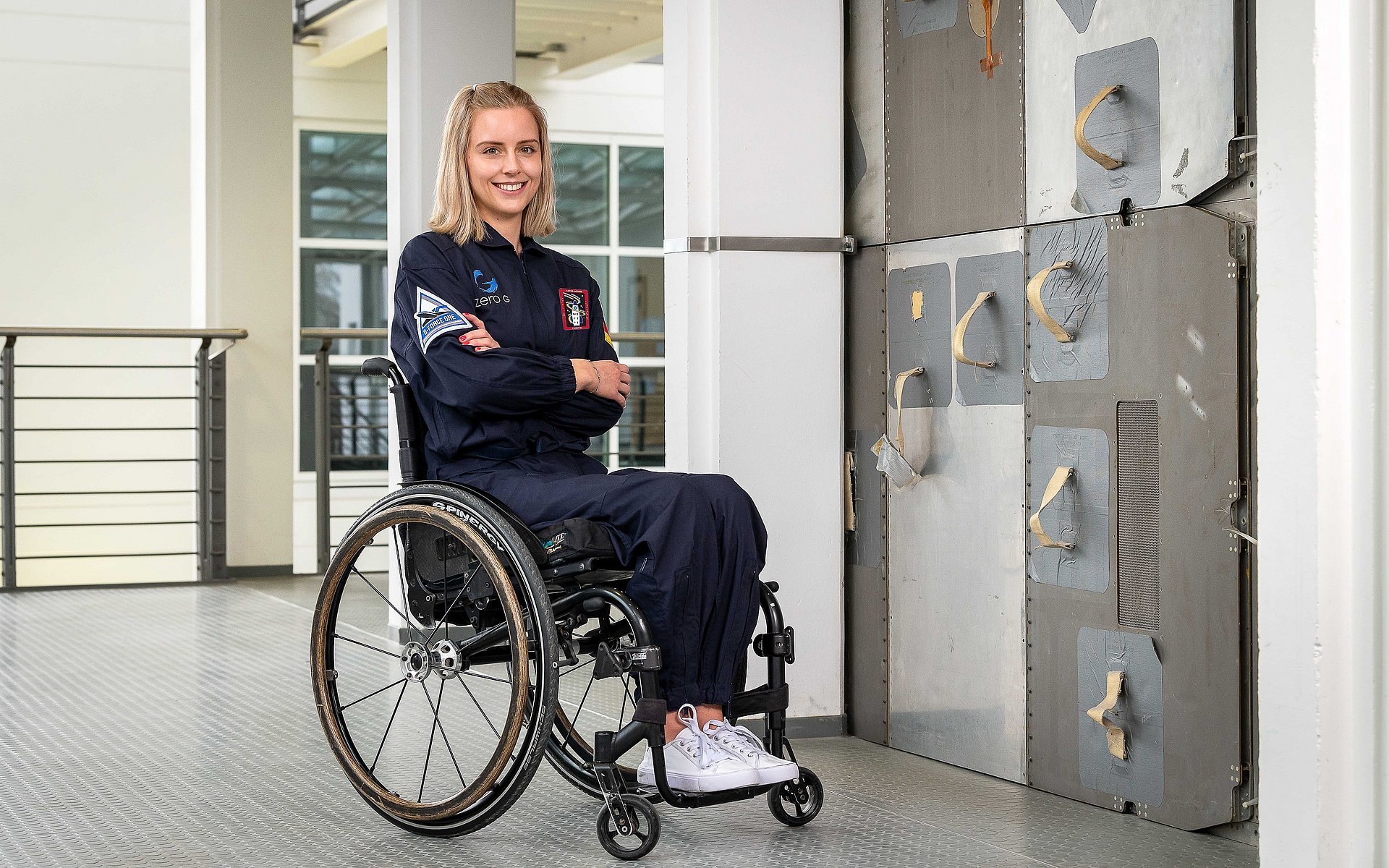Michaela Benthaus at "AstroAccess" in Houston
Aerospace student experiences weightlessness during parabolic flight

Michaela Benthaus has always been “mega fascinated” by outer space and space travel. Ever since she first watched Star Wars at the age of 10, and was amazed by “all of those spaceships”, she was determined to become an astronaut.
Benthaus never gave up on her dream – and continues to pursue it today. After earning a Bachelor of Science degree in Mechatronics Engineering, she was accepted into the TUM Masters Program in Aerospace, specializing in space and astrophysics.
Childhood dreams of outer space
To many, her continued belief in her childhood dream might seem very optimistic. After a mountain biking accident in September 2018 it looked like she had no chance of ever taking off for outer space and experiencing weightlessness. Since the crash, Michaela (30) has been a paraplegic.
“That is not how people picture an astronaut,” says the native of Kiel, Germany. At first Benthaus thought that space flight “was never going to happen” for her. But in recent years she has gradually regained hope: “The times we live in and the technical possibilities are changing.” An amputee who lost his leg was recently accepted for a feasibility study by the European Space Agency (ESA).
Parabolic flight in December 2022
Well aware of how few people ever get such an opportunity, she admits that it is not the entire focus of her life. But for Benthaus, giving up entirely on her dream of space travel is still out of the question. “If I ever get the chance, I will certainly take it,” she says.
And Michaela Benthaus got the opportunity, at least to experience weightlessness, in December 2022. She applied to take part in AstroAccess, a US-based initiative that aims to make space travel accessible to people with disabilities. AstroAccess was preparing to conduct its second parabolic flight. In this maneuver, an aircraft rapidly gains altitude before going into an equally steep dive. At the highest point, at the transition from ascent to descent, people on board experience weightlessness for 20 seconds.
This is “like the sensation of a trampoline jump – but one that lasts 20 seconds,” she says. She reports enthusiastically about the feeling of freedom and especially being able to move on her own once again in the weightless state after so long in a wheelchair.

Experiments in weightlessness
Together with people with different disabilities from various countries, the student had the opportunity to conduct various experiments on board a flight that completed 18 parabolas. However, the participants initially needed a few flights to get used to the sensation of weightlessness. Five parabolas were planned for the orientation flights. “After take-off, you need to familiarize yourself with the situation,” she reports. “Some people start by making swimming motions, but of course that gets them nowhere.” The only way to move around is by “pushing off a wall or another person.”
But she soon realized that “less movement is better”. She was then able to do the experiments that she had prepared well in advance with AstroAccess. These experiments had never been attempted under weightless conditions with disabled persons. For example, she had to move from her floating state back into her seat and fasten the safety harness. In an emergency, astronauts are expected to complete this move within a certain number of seconds – and in Michaela’s case, it also “worked out quite well”.
When working in a space station, astronauts clip their feet into cleats on the floor to stay in one place when making repairs, for example. Because the student cannot move her feet, this is not possible. The “anchor experiment”, which she performed during the parabolic flight, was intended to provide a solution. Using rods placed at hip level, Michi was able to secure herself at one location in order to stand still.

Career opportunities in space tourism
After the second parabolic flight in December, the AstroAccess project will definitely continue in the USA. It is not clear what form it will take, however. Michaela Benthaus wants to remain on board. She is still uncertain what lies ahead for her. Her studies offer opportunities to work in the aerospace field – and not necessarily as an astronaut.
But she is confident that she can make her dream of space travel come true. “A lot is happening in aerospace right now.” And the more space stations that go into orbit and the more private aerospace companies are launched – for example in space tourism – the better her chances will be to continue pursuing her dream and perhaps reach outer space one day.
- After her accident Michaela Benthaus started a blog: http://michi-benthaus.com/
- She received financial support for her trip to Houston from the „Freunde der TUM e.V.“ and the German aerospace company OHB SE.
- To AstroAccess Initiative
- To Master of Science Aerospace at TUM
Technical University of Munich
Corporate Communications Center
- Nico Kellner / Verena Meinecke
- presse@tum.de
- Teamwebsite
Contacts to this article:
Michaela Benthaus
michaela.benthaus@tum.de
Instagram: @michi_benthaus